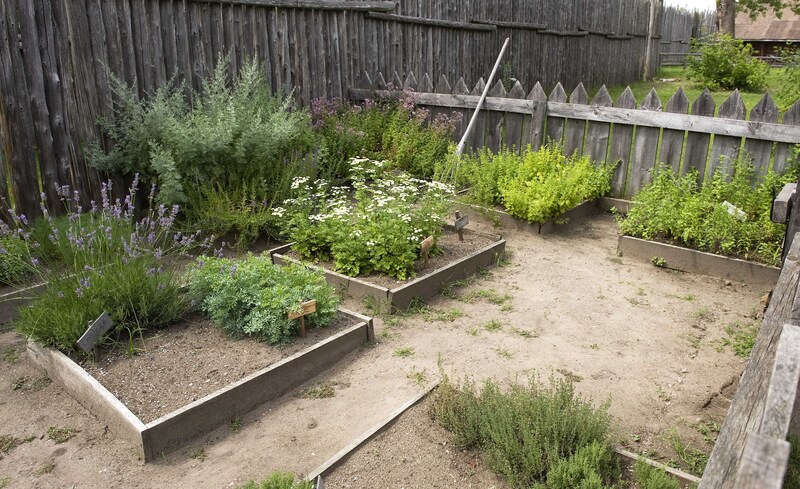Adapting gardening techniques with containers
Posted on 19/09/2025
Adapting Gardening Techniques with Containers: A Complete Guide for All Spaces
Gardening has evolved over centuries, transcending traditional ground plots to embrace innovative methods that suit modern lifestyles. Adapting gardening techniques with containers has become an immensely popular approach for urban dwellers, balcony owners, and anyone with limited outdoor space. Container gardening offers flexibility, creativity, accessibility, and immense satisfaction--enabling you to cultivate a lush oasis regardless of where you live. This comprehensive article explores the best methods, tips, and insights on adapting your gardening expertise to grow healthy plants in containers, whether you're a beginner or a seasoned green thumb.
The Benefits of Container Gardening
Before diving into specific container gardening techniques, it's crucial to understand why this approach has captured the hearts of gardeners worldwide. Below are some compelling advantages:
- Space Efficiency: Perfect for patios, balconies, rooftops, window sills, and even indoors.
- Flexibility: Move your plants to optimize sunlight, protect them from extreme weather, or simply change your arrangement for aesthetics.
- Pest and Disease Control: Easier to monitor and manage plant health.
- Accessibility: Ideal for people with limited mobility--gardens can be brought to comfortable heights.
- Soil Management: Greater control over soil type, drainage, and fertilization suited to each plant.
- Creative Expression: Endless possibilities with varying container styles, sizes, and plant combinations.

Core Principles for Success in Container Gardening
To effectively adapt traditional gardening practices for containers, recognize the essential factors that affect plant growth. Understanding these will ensure robust, beautiful, and productive plants.
Choosing the Right Container
Selecting suitable containers is the first and perhaps most vital step. Containers come in a dizzying array of materials--clay, ceramic, plastic, metal, wood, or even recycled objects. Consider the following when making your selection:
- Size Matters: Larger containers retain moisture better and give roots enough space.
- Drainage: Essential to prevent root rot. Always ensure adequate holes in your pots.
- Material: Terracotta breathes but dries quickly; plastic is lightweight and moisture retentive; metal heats up fast; wood insulates roots.
- Shape: Provides stability and determines planting configurations.
Using Quality Potting Mix
Unlike in-ground beds, container plants rely entirely on the soil you provide. A high-quality potting mix is critical. These mixes typically include peat, coco coir, perlite, and compost, designed for proper drainage and air circulation. Avoid using regular garden soil, as it can compact, inhibit root growth, and harbor pathogens.
Watering Wisely
Plants in containers dry out faster than those in the ground. Frequent checks are necessary--water when the top inch of soil feels dry. Remember, the watering frequency varies based on plant type, container size, and location. For busy gardeners, consider self-watering containers or installing drip irrigation systems.
Feeding Your Container Plants
Regular fertilization is vital, because nutrients wash out of containers with repeated watering. Use slow-release fertilizers mixed into the soil or supplement with liquid feeds during the growing season. Choose a fertilizer that's appropriate for your plant species.
Providing Adequate Sunshine
Most vegetables and flowering plants thrive in at least six hours of sunlight daily. However, with adapted container gardening techniques, you can reposition your plants to follow the sun, grow in partial shade, or even indoors under LED grow lights.
Best Plants for Container Gardens
Not every plant is suited to the container lifestyle. Fortunately, many vegetables, herbs, annuals, perennials, and even dwarf shrubs flourish in pots when given proper care. Below are some top choices:
- Herbs: Basil, parsley, thyme, mint, chives, rosemary
- Vegetables: Tomatoes, peppers, lettuce, radishes, spinach, bush beans, eggplants
- Flowers: Petunias, marigolds, pansies, begonias, impatiens
- Fruit: Strawberries, dwarf citrus trees, blueberries (with acidic soil)
- Houseplants: Pothos, snake plant, peace lily, African violet
Tip: Always match the plant's root depth and spread to the size of your container.
Adapting Traditional Gardening Techniques for Container Gardening
Converting conventional methods to suit container environments requires thoughtful changes. Let's explore some of the most effective strategies.
Companion Planting in Containers
Companion planting pairs compatible species to maximize yield, deter pests, or enhance flavor. While more common in garden beds, you can adapt this technique for pots by choosing plants with similar water, light, and nutrient needs. For instance:
- Tomatoes, basil, and marigold
- Lettuce and radishes
- Strawberries and nasturtium
Succession Planting and Crop Rotation
Even limited spaces can enjoy continuous harvests using these methods. Replace harvested crops with fast-growing varieties, or rotate plant families each season to reduce disease and soil depletion.
Vertical Gardening in Containers
Make the most of small spaces by growing upward. Use trellises, tomato cages, wall planters, or hanging baskets to add dimension and increase yield. Vining vegetables, like peas and beans, or flowering climbers are excellent choices.
Mulching for Container Plants
Apply organic mulch, such as bark chips or straw, over the soil surface to retain moisture, suppress weeds, and stabilize root temperature--even in pots.
Dealing with Environmental Stress
Containers are more exposed to extremes of temperature and wind. Group plants for mutual protection, move containers to sheltered spots, or insulate with bubble wrap or burlap during cold snaps.
Creative Ways to Adapt Gardening with Containers
- Upcycling: Repurpose barrels, buckets, old boots, or crates as unique planters.
- Mobile Gardens: Place containers on casters for easy relocation and sun-chasing.
- Theme Gardens: Create a culinary herb pot, a butterfly-attracting flower tub, or a pizza garden of tomatoes, basil, and oregano.
- Indoor Edibles: Use compact or dwarf varieties for year-round harvests inside your home.
- Stackable Systems: Vertical towers and stackable planters are perfect for maximizing limited floor space.
Troubleshooting Container Gardening: Common Issues and Solutions
Even the best-planned container gardens can face challenges. Here's how to resolve frequent pitfalls:
- Leggy Growth: Usually caused by insufficient light. Relocate pots or consider grow lights.
- Yellowing Leaves: Often a sign of overwatering or nutrient deficiency. Check drainage and fertilization routine.
- Pest Outbreaks: Inspect regularly; remove pests by hand or use organic sprays if needed.
- Wilting: Can indicate both under or over-watering. Feel the soil to confirm the cause.
- Stunted Growth: May be due to cramped roots. Repot into a larger vessel as needed.
Case Studies: Real-Life Successes with Adapting Gardening Techniques in Containers
Urban Balcony Transformation
An apartment dweller in New York transformed a bare balcony with a dozen containers, growing cherry tomatoes, peppers, and fresh herbs. By using self-watering planters, strategic sunlight placement, and companion planting, their vertical mini-garden provides fresh produce and visual delight all summer.
Disability-Friendly Gardening
A retiree with mobility challenges adapted their gardening passion by using waist-high raised containers and lightweight fabric pots. Regular harvests of lettuce, carrots, and pansies are possible without bending, making gardening accessible and therapeutic.
Educational Container Gardens in Schools
Schools with limited green space employ container gardening techniques to teach students about plant life cycles. Children grow beans and sunflowers in recycled bottles, gaining practical skills and a love for nature right in the classroom.
Advanced Tips: Elevate Your Container Gardening Game
- Wicking Beds: Build a self-watering system for less frequent watering and more resilient plants.
- Hydroponic Containers: Try soilless growing indoor or outdoor using hydroponic setups for leafy greens.
- Sub-irrigated Planters (SIPs): Sophisticated containers with water reservoirs minimize drought stress.
- Rainwater Capture: Use small barrels to collect rainwater for sustainable, chemical-free irrigation.
- Season Extension: Move containers indoors during cold nights or utilize cold frames and cloches for early/late season crops.
Eco-Friendly Practices for Container Gardens
- Choose Sustainable Materials: Bamboo, recycled plastics, or biodegradable pots reduce environmental impact.
- Compost: Make your own compost for potting mixes and top dressing.
- Water Conservation: Mulch, drip irrigation, or reused graywater keep resource use low.
- Native and Pollinator-Friendly Plants: Support local ecosystems and attract beneficial insects with native species.

Frequently Asked Questions about Adapting Gardening Techniques with Containers
Can I grow fruit trees in containers?
Yes! Dwarf and mini fruit trees like lemon, lime, apple, and fig varieties are specifically bred for pots. They require larger, sturdy containers, regular feedings, and occasional root pruning.
How do I prevent my containers from drying out too quickly?
Use larger pots, add mulch, choose moisture-retentive potting mixes, and group containers together. Self-watering planters also help.
Do I need to change the soil in containers every year?
It's a good idea to refresh at least one-third of the soil annually and replace it entirely every few years to prevent disease buildup and restore fertility.
How do I move heavy containers?
Use plant caddies with wheels, leverage with a dolly, or break up soil before moving. For permanent placements, consider lightweight alternatives like fabric pots or plastic planters.
Conclusion: Transform Any Space with Adapted Container Gardening
Adapting gardening techniques with containers opens the door to lush, productive gardens in any environment. With careful planning, the right plants, and creative thinking, you can nurture a thriving garden on balconies, patios, rooftops or indoors. Whether you're growing culinary herbs, vibrant flowers, or fresh vegetables, container gardening empowers everyone to experience the joys of cultivation--no matter the size of your space. Start experimenting today and discover the possibilities!



